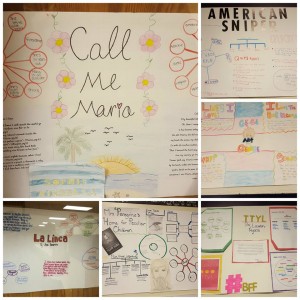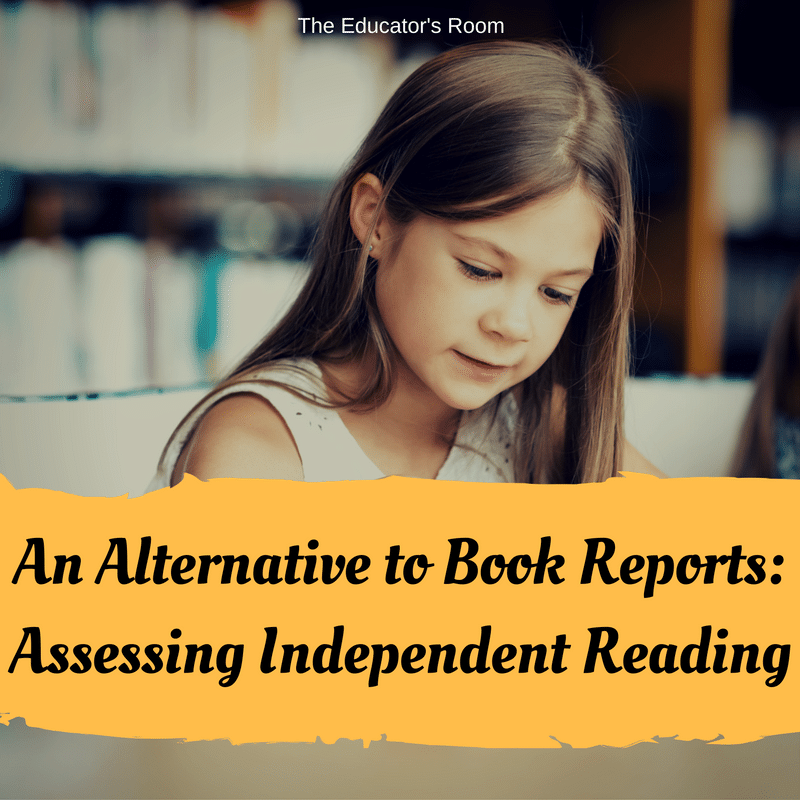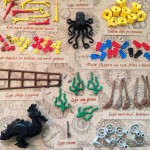 I am a huge advocate for student choice when it comes to reading, but one thing that people repeatedly ask me is: How do you assess and grade students’ independent reading if they are all reading different books?
I am a huge advocate for student choice when it comes to reading, but one thing that people repeatedly ask me is: How do you assess and grade students’ independent reading if they are all reading different books?
I’ve written before about how I don’t use Reading Logs, but rather Response Notebooks. I use response notebooks as a formative assessment to check on how students are able (or not able) to apply strategies and thinking maps that we have learned and to see what students are reading and how they are comprehending it. Each response is worth five points, and I collect notebooks every ten responses.
Because every student is expected to read at least one book of their own during each marking period, my department also has students complete a summative assessment over an entire book, but we do not give quizzes or book reports.
A book report generally only does one thing: summarize the book. Being able to summarize is a fairly low-level thinking skill. It involves recall and only minimal comprehension. My 8th-grade students are capable of much high thinking than that. Rather than assign a book report then, I give a quarterly Book Project assignment that requires students to show they can not just remember and understand, but also analyze, evaluate, and create.
Incorporating Choice
Not only do students choose to read whatever they want–I have an extensive classroom library and we take a quarterly trip to our school’s media center as a class–but they also get an element of choice for their quarterly book project. For one, they have the choice of what book they do their project on. Students are required to read in class when we do silent reading, but most also read on their own. This means they usually finish more than one book in a grading period, so they can pick which one they want to do their project on.
[bctt tweet=”Choice Matters in reading projects for students” username=”EducatorsRoom”]
The projects each have choice embedded in them as well. For instance, the first quarter project is a book advertisement. They must include five elements on their advertisement, but they may choose which five from a list (or come up with their own) and choose how they want to present them (many choose a poster, but that is not a requirement). They are also assigned a Book Talk Group to present their advertisement to and try to “sell” the book for others to read.
Choices for the Book Advertisement
-
lines you love
-
a personal reflection about why you loved the book
-
a letter to the author
-
a letter to a potential reader
-
a list of questions you had while reading (without answers! No spoilers!)
-
a letter of advice to a character
-
a bubble map about one of the characters
-
a double bubble comparing characters of comparing the book to another like it.
-
a circle map with words you would use to define the book (examples: mysterious, suspenseful, funny, thought-provoking, etc)
-
write a poem inspired by the book or a character
-
add some song lyrics that remind you of the book and tell why
-
create a flow map of events in your book –without giving too much away!
-
draw a picture or illustration for your book
-
Write about how you connected to your book
-
Write about why you think the author wrote the book.
-
Write about what you learned by reading the book
-
Create a multi-flow map showing some cause/effect relationships in the book (put the main problem/conflict of the book in the middle of the map).
-
Create a Tree Map of all the characters in the book.
-
Create Bridge maps showing connections you made with the book
-
something else you think of!
Differentiated Assessment
The first quarter’s project is pretty wide open to how students want to represent their books. This is purposeful because it helps students play to their strengths and various abilities. I teach a wide range of 8th graders: from high-achieving students who need a challenge to very low students who struggle with learning disabilities (I team teach with special ed teachers for two periods). This first quarter I spend a lot of time helping students figure out what they like as far as books, so I don’t want to scare them off with an impossible-seeming project.
Letting students be in charge of the decisions for how to share their book with me and their classmates helps to build confidence in them not only as a reader but as a learner. At the same time, whatever they choose still assesses the same set of standards as a student who chooses differently from the list.
Accessing Higher-Level Thinking Skills
The second quarter project still gives students choice (they choose one option from the list below), but asks them to only do a written response to their books. They are expected to set it up in typical essay format (intro, body, conclusion).
- Describe the character/person who changed the most from beginning of the book to the end of the book. Explain the change and what caused it.
- Describe a minor character/person in the book who had major importance. Explain.
- Describe one major external conflict and one major internal conflict found in this book
- Write a book review and rate the book on a scale of 1-10 (10 being the best) explaining why you chose that rating.
- Evaluate the ending of the book. Considering how the book unfolded, is it an effective ending? Why or why not?
Each of these options requires students to both remember and understand the book they read, but it also asks students to access higher-level thinking skills like analyzing and evaluating. In order to meet the requirements, students need to use textual evidence, make connections, and discuss character motivation and/or theme.
Gradual Release of Assessment to Student
Each quarter, the student gets more and more freedom over how they choose to represent their book. As mentioned, the first is a Book Advertisement aimed at practicing many skills we reviewed during the first quarter (thinking maps, connecting to literature, summarizing, inferring theme and purpose, etc.). The second project is a written piece that pulls from some of the work we do with mentor texts.
[bctt tweet=”Each quarter, my students get more and more freedom to choose how they represent their book” username=”EducatorsRoom”]
During the third marking period, students get an even larger choice: They are to create a project that includes two thinking maps (of their choice), two written pieces (of their choice), and a visual (of their choice). Students tend to get very creative by this point. One teacher in my department had a student read about a character who was in jail, so he took an old refrigerator box and made it into a jail. He glued his thinking maps and written pieces to the jail and talked about his book to the class from inside his self-made cell.
The final marking period is a true “choose your own adventure”: Students can do whatever they want based on all the things we have learned over the school year. Some students choose a longer essay, but many choose a project. We celebrate these creations during the last week before exams and of course, we include snacks because all good book groups have snacks!
By assessing students’ choice reading via conferences, reading response notebooks, and book projects, kids tend to take more ownership of their reading and assessment than if a novel was handed to them and reading logs assigned with a test at the end of the book.







How do you assess? Do you have a rubric?